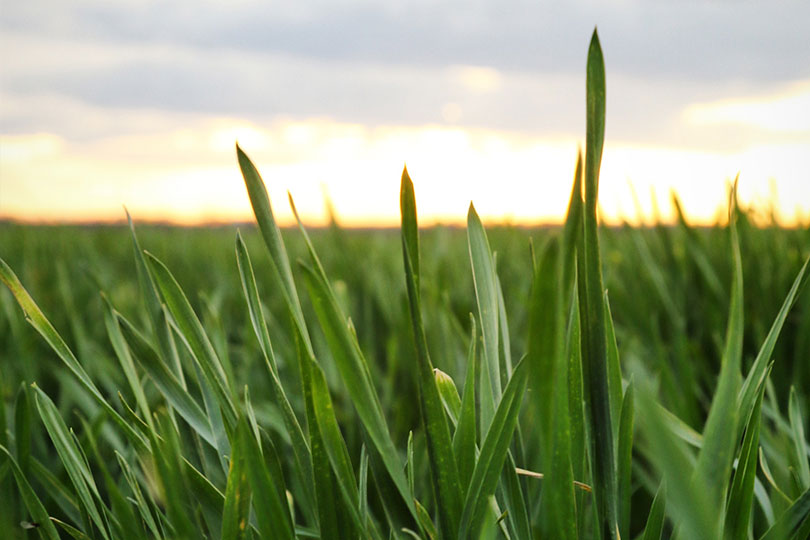By Jennifer Dorsett
Field Editor
In the Texas Panhandle region of the High Plains, wheat farmers have more than one end-use option for their crop.
Although corn and forage sorghum silage are popular options, wheat silage, also called wheatlage, provides ranchers and dairy farmers an alternative forage source for their cattle. It also gives wheat farmers another opportunity when selling their crop, according to Amarillo Texas A&M AgriLife Extension Service Agronomist Dr. Jourdan Bell.
Wheat is flexible and provides farmers the option to harvest for grain or forage based on markets and weather. Bell said recent freezes in the southwestern Panhandle had many farmers chopping fields for both hay and silage.
“A wheat crop can be grazed, baled or cut as green chop or as wheatlage if it is not taken to the grain stage,” she said. “While grain harvest in the High Plains is typically in late May to early June, forage options allow the farmer to harvest their crop during April. In some cases, this might also allow the farmer to plant a summer crop.”
Green chop wheat is either fed directly or wilted in the field prior to ensiling, according to Bell. Crude protein and digestibility are greater at earlier growth stages, so green chop wheat is generally cut at the boot stage, she said.
At boot stage, which is also known as 10.0 on the Feeks growth scale, the head is still growing inside the flag leaf. Moisture content is about 80 percent at this stage, Bell noted.
Wheatlage is generally chopped at the soft dough stage, or Feeks 11.2. The kernels on the head are what’s known as “mealy ripe” at this stage—soft but still dry. Bell said soft dough stage is generally good for wheatlage because moisture content at this time encourages fermentation.
“There is generally a significant reduction in yield when chopping at boot rather than at soft dough,” she said. “At soft dough, the early grain development, as well as added biomass, contributes to higher yields, although quality is reduced.”
Bell noted overnight freezes in the High Plains led more farmers in the area to consider chopping their wheat for hay or wheatlage.
Wheat acres for forage continue to increase in the northwestern Panhandle, as well.
“Although many producers are concerned about freeze-related yield reductions, a large percent of the wheat acres was already contracted for green chop or wheatlage,” Mike Bragg, AgriLife Extension Agriculture and Natural Resources agent in Dallam and Hartley counties, said.
After noticing the increased demand for green chop and wheatlage in 2018, Bell and Bragg planted a wheatlage trial in northwest Dallam County. They said many farmers had questions about yield penalties when harvesting at boot versus soft dough stage.
The data collected from the trial is helping farmers decide how and when to sell their crop.
The average yield for all evaluated varieties was three tons per acre on a dry matter basis at boot compared to an average of seven tons per acres for the same varieties harvested at soft dough in the same field, Bell said.
Although harvesting at an earlier growth stage resulted in a reduction in yields, the researchers’ data showed quality is better at that time.
Bell and Bragg are repeating the experiment this season.
“If the producer is not compensated for a reduction in yield when harvesting at boot, there is often a significant economic loss,” Bell said. “Knowledge of the yield loss may help the producer negotiate the price.”

